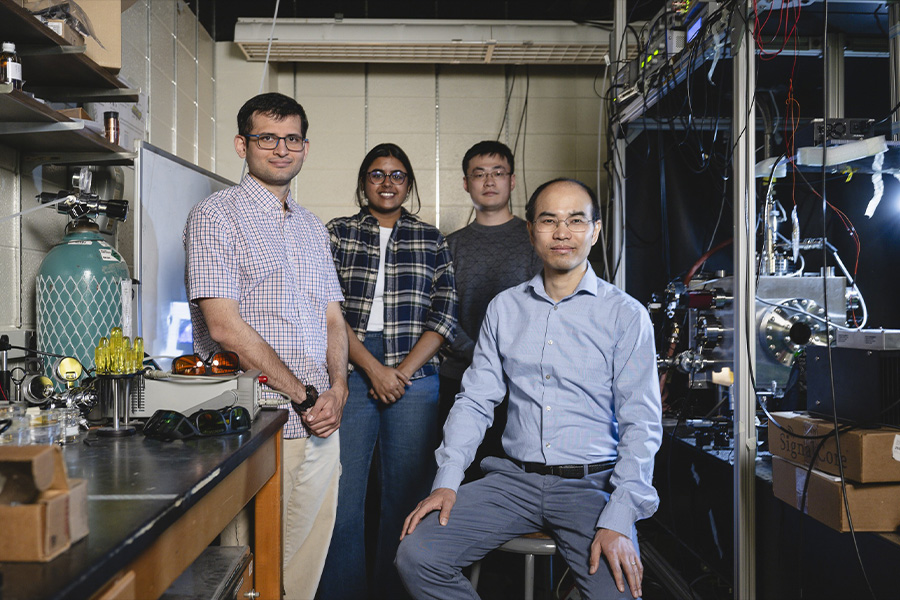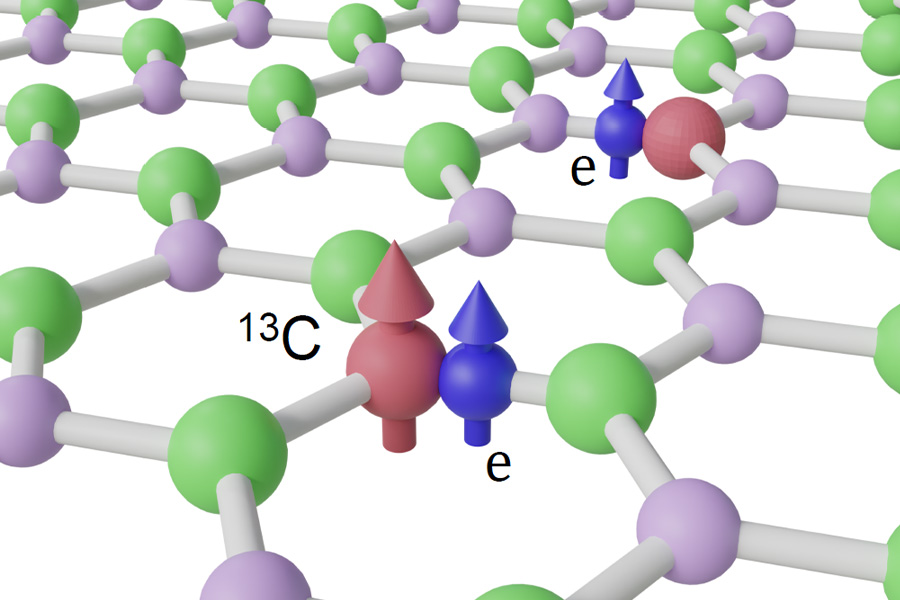Purdue researchers achieve breakthrough in quantum sensing with 2D material
Purdue researchers achieve breakthrough in quantum sensing with 2D material

A team of researchers at Purdue University has made a major breakthrough that could lead to incredibly small and precise sensors - ones that can detect and control individual atoms. The paper detailing the research, “Single nuclear spin detection and control in a van der Waals material,” appears in the journal Nature.
Led by Tongcang Li, professor in Purdue’s Elmore Family School of Electrical and Computer Engineering and Department of Physics and Astronomy, and Director of the NSF IUCRC Center for Quantum Technologies (CQT), the team used special defects in a super-thin material called hexagonal boron nitride (hBN) to detect and control the spin of a single atomic nucleus, something researchers have been working toward for years.
Spin is a quantum property of particles, like a tiny magnet, and controlling it is key to developing powerful new technologies in quantum computing and sensing.
“Think of it like being able to listen to a single instrument in a huge orchestra,” Li said. “That level of detail opens up exciting possibilities for science, medicine, and technology.”

The Purdue-led team created special defects - tiny imperfections - inside the hBN material by adding carbon-13 atoms. These defects behave like quantum sensors. Using these sensors, the team was able to pick up signals from individual atoms and even control them with extreme precision, all at room temperature.
They achieved a 99.75% accuracy rate in flipping the nuclear spin, a level of control that is extremely promising for future applications.
Because hBN is made of atom-thin layers, it allows these tiny sensors to get closer than ever to whatever they’re trying to measure. That could lead to new tools for imaging or analyzing molecules in biology, chemistry, or materials science, potentially even allowing scientists to “see” individual molecules in action.
To better understand what was happening at the atomic level, the team also used powerful computer simulations to propose how these spin defects are structured.
This work not only sheds new light on the quantum behavior of spin defects in hBN, but also points the way toward practical, next-generation tools for ultra-sensitive detection, imaging, and information storage.
